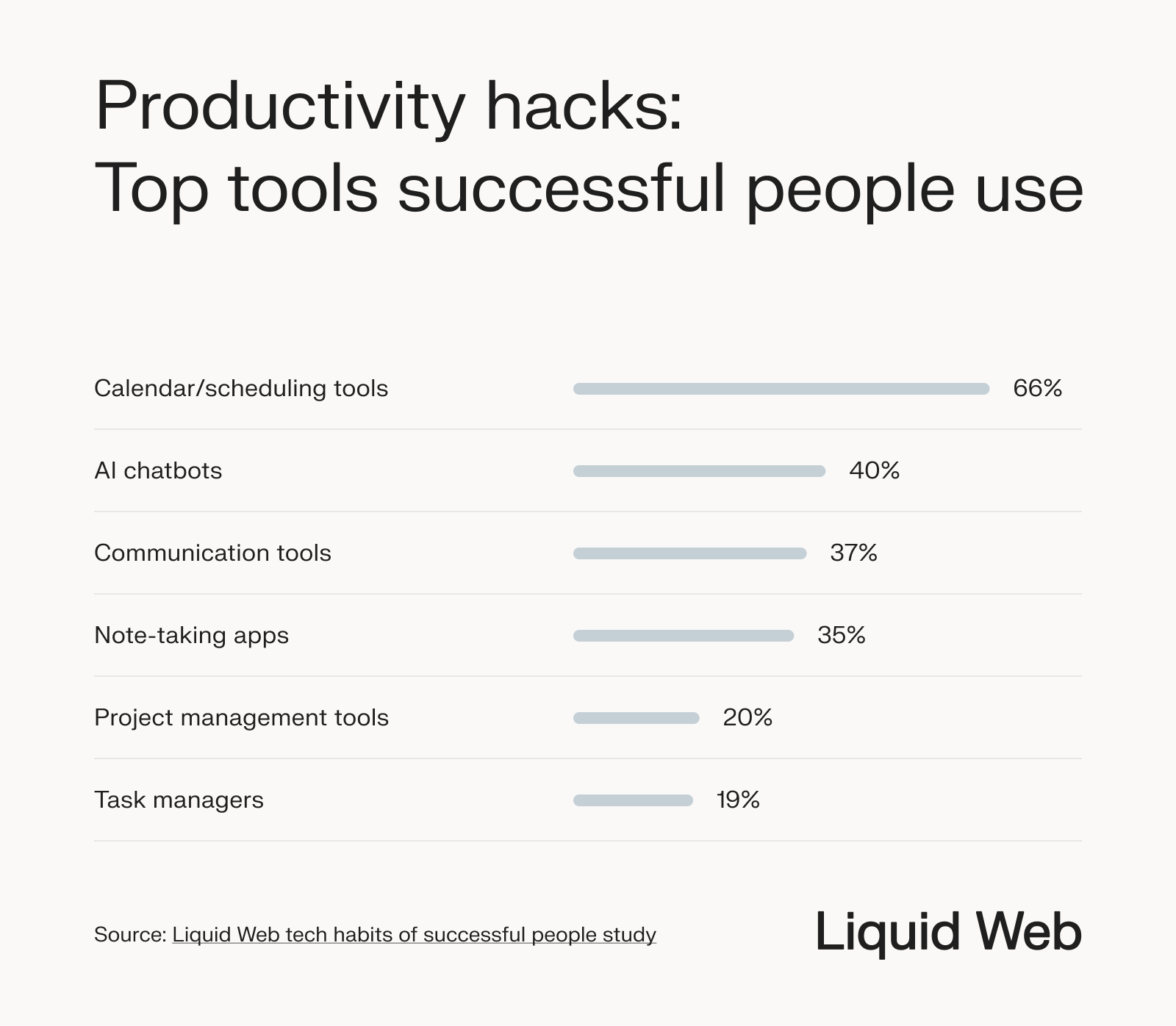A recent survey of more than 1,000 professionals, conducted by LiquidWeb, has drawn a detailed picture of how people at the top of their careers handle technology in daily life. By comparing high earners with the broader American workforce, the study found that patterns of use were less about spending less time on screens and more about shaping routines around them.
High achievers in the survey reported spending roughly seven hours a day on their computers, mainly for work, and about three hours on their phones, often for leisure. The wider workforce, in contrast, leaned more heavily on phones, devoting nearly a quarter more time to them. The gap suggests that for those with demanding jobs, computers remain the primary tool while casual mobile use takes a back seat.
Time away from screens was another part of the picture. About 44 percent of successful respondents said they stepped away from devices at least once a day, compared with 38 percent of the wider group. Smaller shares in both groups reported breaks only once a week. Focus modes and screen-time alerts were mentioned, yet the most common approach was as simple as switching off altogether.
Morning routines also showed a split. Many of the high achievers held off from checking devices straight after waking, giving themselves space to plan the day before facing messages and notifications. More than seven in ten scheduled deep work sessions into their calendars, often lasting an hour to an hour and a half. Those who did so finished projects at roughly double the pace of peers who worked in shorter bursts.
The way communication was handled also set this group apart. Nearly half said they checked work messages outside of office hours, compared with 38 percent of the wider sample. At the same time, many batched emails and Slack notifications into fixed windows. This approach cut down mistakes by about a quarter and left more attention for bigger tasks.
Social media habits told their own story. Around 49 percent of high achievers reported avoiding TikTok completely. Platforms like Reddit and LinkedIn drew more interest, with four in ten using Reddit regularly and LinkedIn showing a higher adoption rate than in the broader workforce.
When it came to devices, premium tools were favored. Sixty-three percent of successful respondents called the iPhone essential, compared with 34 percent for Android phones. Nearly half relied on laptops rather than desktops, and accessories such as headphones, smartwatches, and tablets were common, though at lower levels. More than a third said they preferred premium gear overall, while just under a quarter leaned toward cheaper models.




The survey also looked at health-related routines. Short breaks for stretching or mindfulness were tied to about a 10 percent lift in reported productivity. Some respondents used apps or timers to remind themselves to pause, while others followed methods like the Pomodoro technique to manage long stretches of work without burning out.
Taken together, the findings point to a group that spends plenty of time with technology yet keeps it in check with clear routines and selective habits. The picture that emerges is one of people who treat their devices as tools, drawing firm lines around when and how they’re used, and finding ways to keep focus and energy steady across the day.
Read next:
• Why Executive Branding Is Getting Personal: Lessons from the Digital Workplace’s New Playbook
• OpenAI Expands ChatGPT With Chromium Browser, Affordable Plan, Voice Upgrades, and Personality Shift
• The Less You Use It, The More You Fear It: AI’s Uneven Welcome at Work
